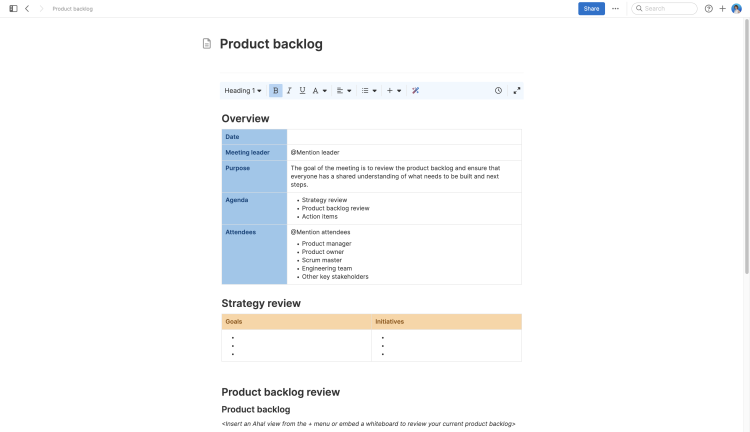Product backlog refinement meeting template
Prioritize, clarify, and prepare work for development
Use template
About the product backlog refinement meeting template
Backlog refinement is crucial for continually delivering value to customers. Refinement involves rewriting backlog items to be clearer, deleting obsolete items, and breaking down large efforts into smaller ones. By regularly refining the backlog, you maintain an accurate picture of what needs to be done and reduce surprises for the engineering team.
Invite relevant team members to your backlog refinement meeting and use this template to discuss items in your backlog. Then, assign priorities to ensure the most critical work gets addressed first.
This is an opportunity to bring the team together, streamline your tasks, and put product goals within reach. Keeping your backlog organized and up-to-date will lead to smoother development and better results.
Best practices
Run effective product backlog refinement meetings so engineering can confidently start work on the right features.
Revisit your product strategy Review your current product goals and initiatives. Summarize how you are progressing against each one to anchor the backlog discussion in what the team needs to accomplish.
Review your product backlog Go through the top features in your backlog, highlighting how they relate to your strategy. Rank features in order based on their priority, value, and readiness to implement — removing any that are no longer relevant.
Promote team clarity Make sure each feature is clearly defined. Encourage team members to ask questions so that any ambiguities related to customer and business needs, acceptance criteria, dependencies, effort, timing, and next steps are clarified before work gets underway.
Document changes and decisions Capture notes during the meeting and ensure that the product backlog is updated to reflect any changes and decisions. Record action items — setting a date and assigning them to team members — so you can follow up on open questions or tasks outside of the meeting.